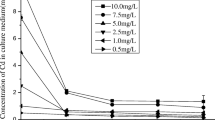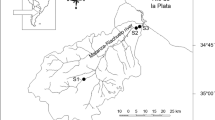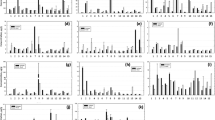Abstract
The sequential elution technique, used to determine the cellular location of metals in nonvascular plants, was adapted to the seaweed Ulva lactuca Linnaeus for the heavy metals Cu and Cd. The optimum conditions for the extraction of extracellular Cu and Cd were determined using specimens previously loaded with these metals. The best extracellular metal extraction media and the number of extracellular metal extraction steps obtained were the following: Two steps (1 h + 40 min) in a filtered sea water–20 mM Ni solution for Cd and two steps in a filtered sea water–50 mM Co solution for Cu. To find these extraction conditions the extracellular metal extraction capacity of the different media used as well as the alteration provoked in plasmalemma permeability were compared. The concentrations of the incubation solutions of Cd and Cu that allowed reliable comparisons between the different extracellular metal extraction media used were previously determined.
Similar content being viewed by others
Author information
Authors and Affiliations
Additional information
Received: 9 January 2001/Accepted: 12 May 2001
Rights and permissions
About this article
Cite this article
Costas, R., López, J. Application of the Sequential Elution Technique to Determine Cd and Cu Cellular Location in Ulva lactuca Linnaeus. Arch. Environ. Contam. Toxicol. 41, 427–435 (2001). https://doi.org/10.1007/s002440010268
Published:
Issue Date:
DOI: https://doi.org/10.1007/s002440010268




